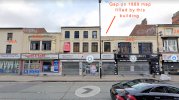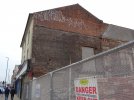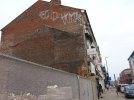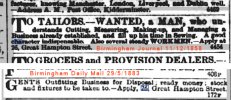Frederick Restall Ltd. occupied these premises as listed in Kelly's:
1884 to 1892 No. 28
1895 to 1899 Nos. 28 & 29
1900 to 1908 Nos. 28 to 30
1912 to 1932 Nos. 28 to 31
1936 to 1967/1968 Nos. 27 to 33
In 1977 the shops were required for a factory extension.
So from humble beginnings in 1884 (or before?) with 1 shop, they gradually expanded along Great Hampton Row until they occupied 7 shops.
It seems likely that they were probably responsible for 'filling the gap' between Nos. 28 & 29 to link their shops.
More info for Frederick Restall:
In 1974 Frederick Restall Ltd. (previously trading as Hilton & Restall c.1879) celebrated their 110th anniversary, this company listed as 'house furnishers' was situated in various premises on Great Hampton Street (although prior to this could be found on Gt. Charles Street), in the Kelly's...

birminghamhistory.co.uk

www.google.com







